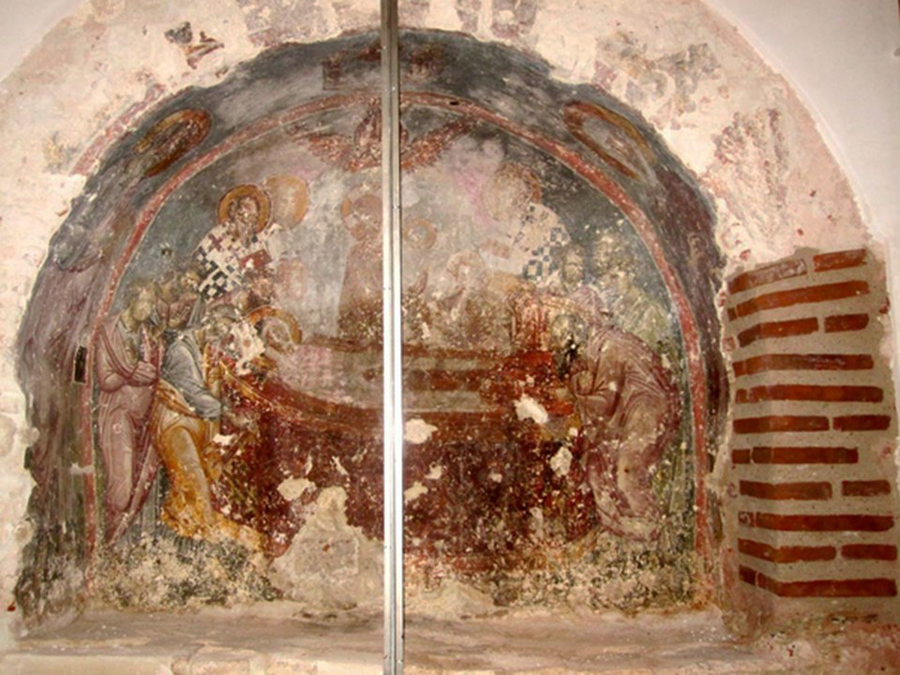
Ephemera
Former Galata Church
The former San Paolo & San Domenico Domenican Catholic Church was the main Christian edifice within Latin Galata, an area that was populated by a Genoese civilian and military colony that received the privilige of autonomy within its walls to the fact they helped expel the Venetian occupiers of Constantinople that had sacked and occupied the main city in 1204, a betrayal of the Eastern Orthodox Church by the Crusaders that still has its resonance today. The structure dates from the 1325, making it the oldest Catholic church in Istanbul, however in 1475, eventhough Mehmet the Conqueror allowed for the Genoese colony to continue a semi-autonomous status in terms of capitulation priviliges, though not allowing any military fortifications, converted this building to a mosque in 1475, along with a score of other mainly Orthodox churches in the city and surroundings. The church was given to the Arab colony that came from the Iberic peninsula, evicted from there with the same inquisition that expelled the Jewish population, many of whom also found sanctuary in the Ottoman Empire. The frescos, though now concealed, are probably one of the best example of early Renaissance / late Gothic style to have survived in this region.
In official and public discourse it has been known as the Arab Mosque and the false history that it was founded by Arab conquering armies in one of their unsuccessful seiges of Constantinople continue till today, including the plaque outside its gate. Between 1913-1919 the building suffers extensive renovations and alterations, with the court wall being torn down, the building extended and over 100 tombs of Latin nobles and knights under the floor were moved to Istanbul Archaeological Museum, however many are now not traceable. Some of the minor Moslem graves in the area were given ‘Arabic status’ and are now part of the complex to create this new story. Despite this huge intervention, the building and particularly the bell tower still have classic Latin elements to it. Segments of the plaster removed during the 17th August 1999 earthquake revealed portions of frescoes and the 2010-13 minor renovations fully revealed these stunning frescoes but the sensitivity meant that only officials could take photographs before they were hastily covered again.
There is a tragedy that Turkey still feels threatened by its multi-cultural past and Christian relicts are considered by many in authority as possibly dangerous and subversive. Thus the tourism and cultural potential of these buildings is wasted and in other cases allowed to decay away. Such attitudes continue to sap the will of many minorities and the young generations often emigrate to easier environments.
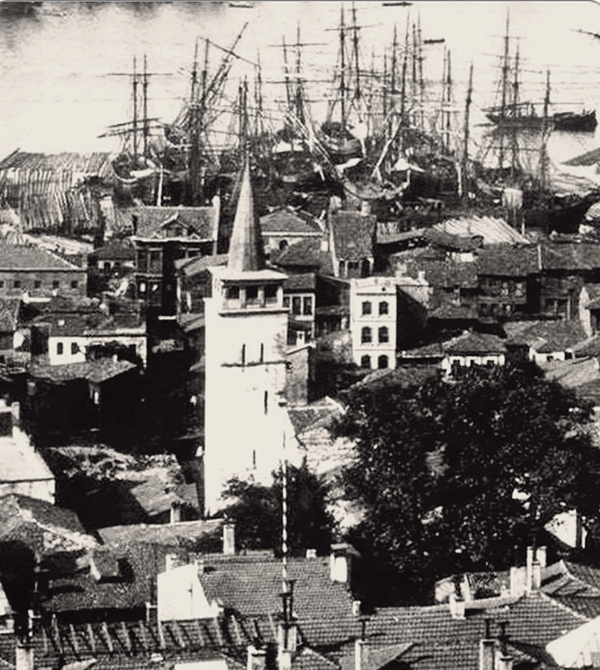
Arab Mosque, the former San Domenico Domenican Church near the shore of the Golden Horn in Galata as seen in Ottoman times.
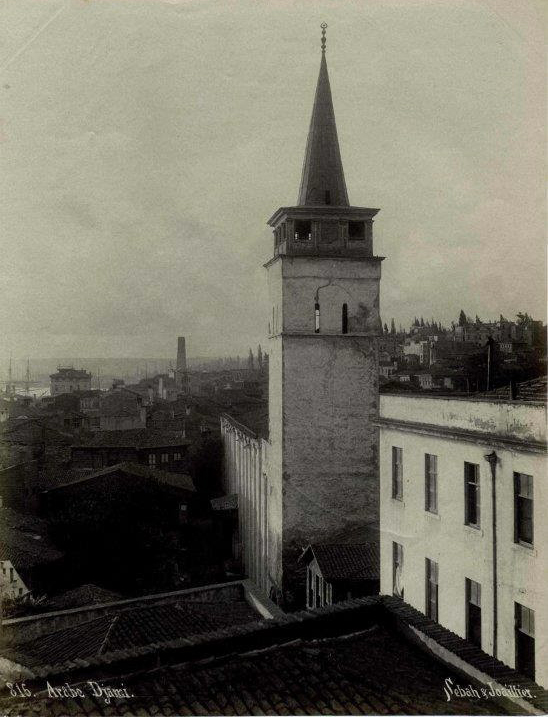
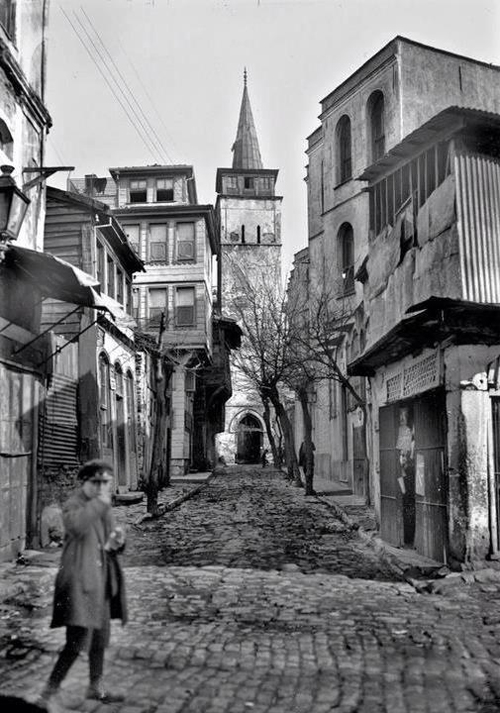
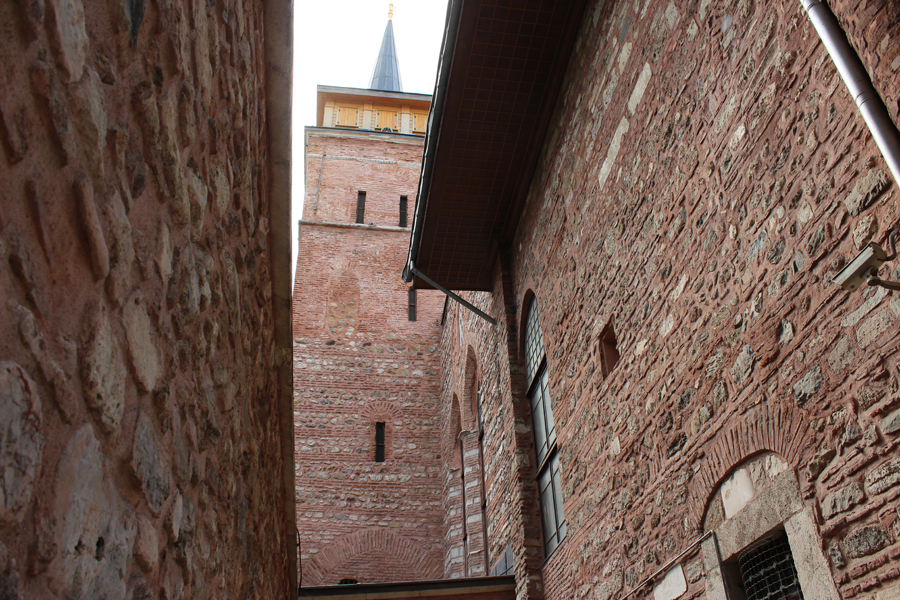
The bell tower today viewed from the courtyard with gothic style window openings seen in the original core building.
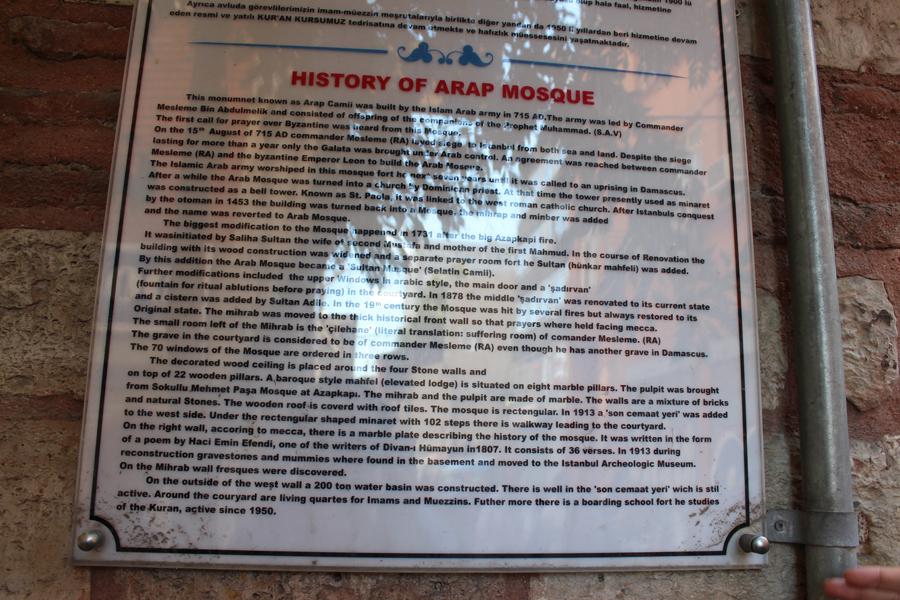
The false history displayed outside this mosque / church.
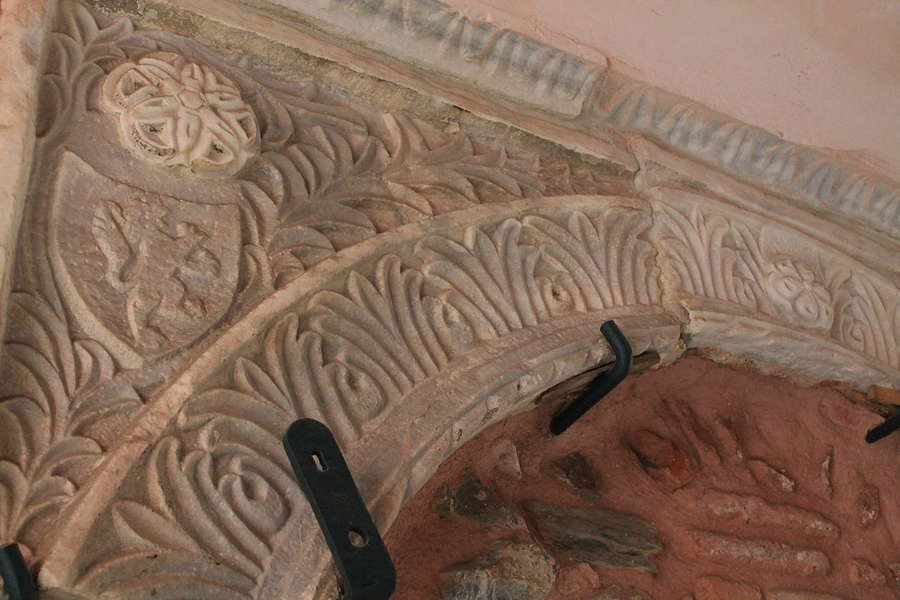
A surviving archway in the mosque with a heraldic lion.
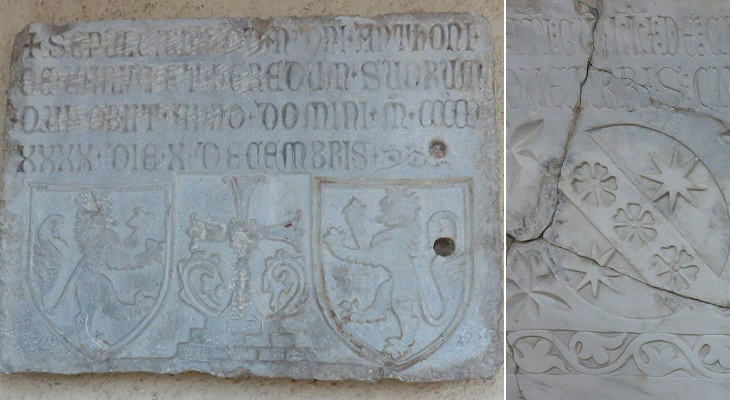
Some of the gravestones of Genoese families found at Arap Camii now in the vaults of the Archaeological Museum of Istanbul.
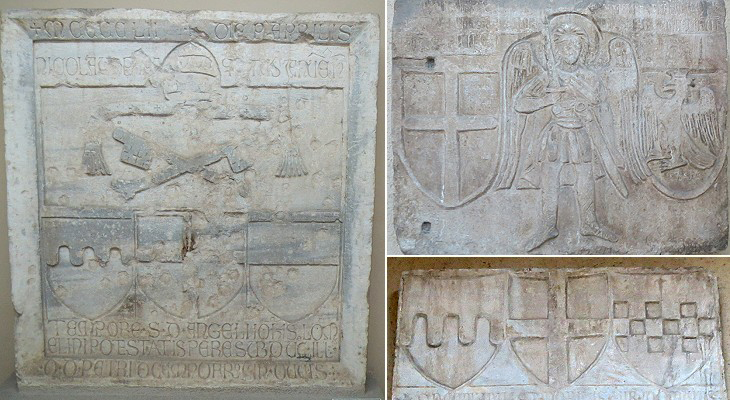
Archaeological Museum of Istanbul: (left) coat of arms of Pope Nicholas V (1447-55) and of the Genoese families Campofregoso and Lomellini at the sides of that of Genoa; (right-above) Archangel Michael between the coats of arms of Genoa and the Doria family; (right-below) coats of arms of families Campofregoso and Spinola at the sides of that of Genoa.
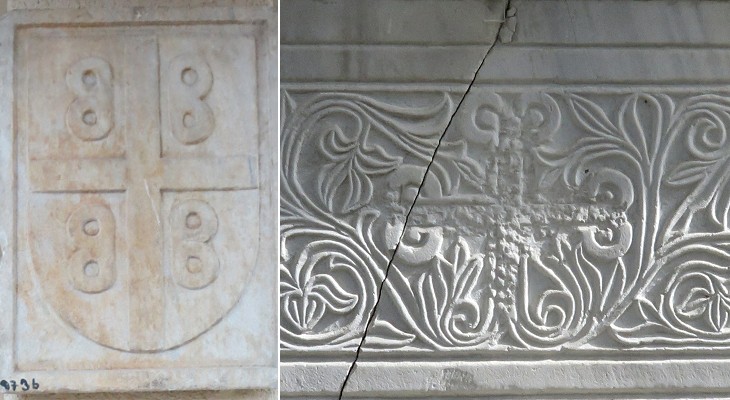
Again in the stores of the archaeological museum, reliefs found at Arap Camii, the former church of St. Dominico at Galata: (left) symbol of the Palaeologan Byzantine Emperors: "B" stands for "basileus" the Greek word for emperor: the four "B"s denote the "Emperor of Emperors who rules over Emperors"; (right) fragment of Byzantine decoration.
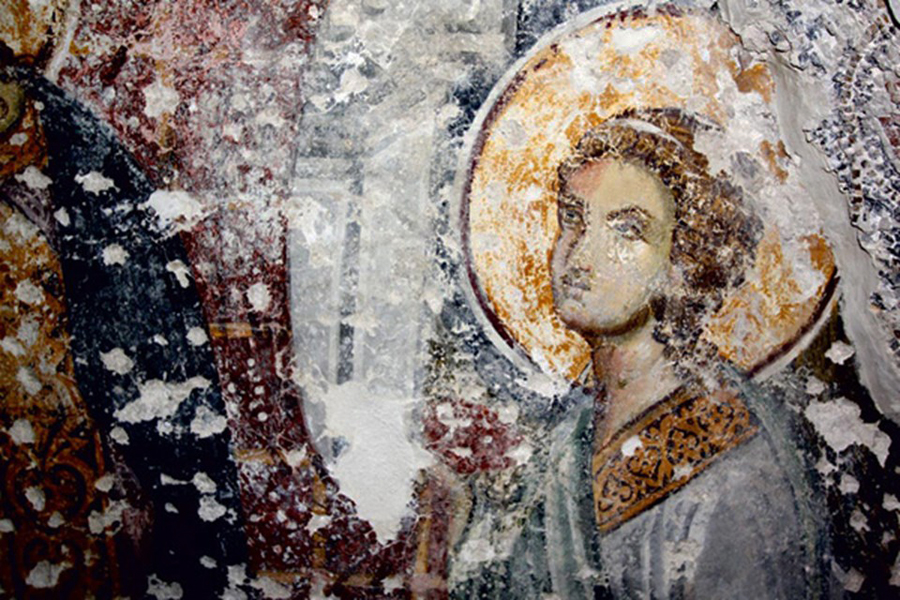
These frescoes were revealed in part when the plaster covering them fell away in the August 1999 earthquake that struck the region.
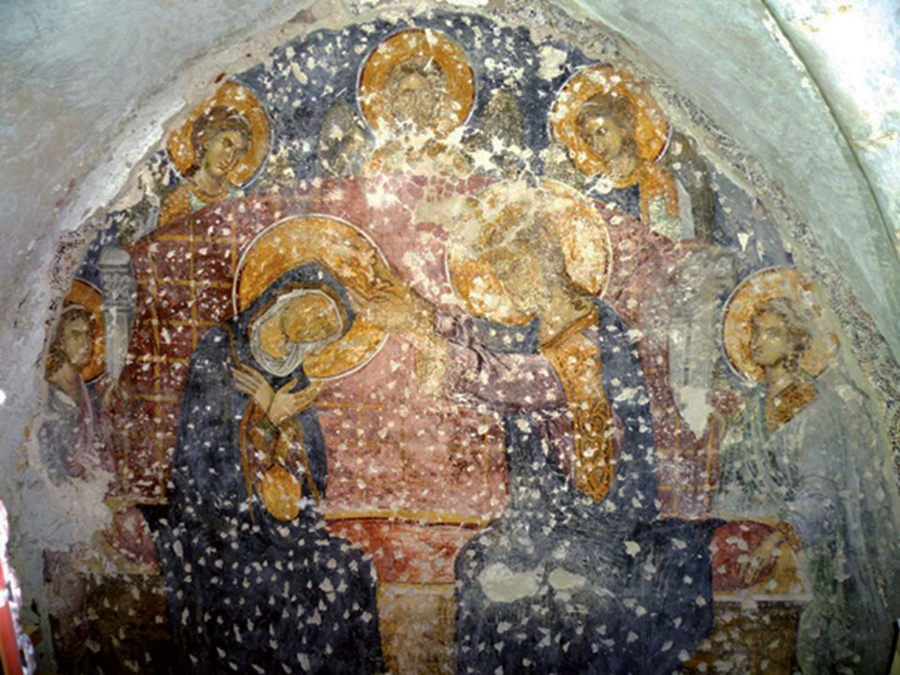
The frescoe in the side nave of the church depicting the crowning of Virgin Mary by Jesus Christ in eternal light in front of a curtain held by 5 angels. The mosaic frescoe, perhaps the same non-Byzantine style scene, has pulled away over time.
